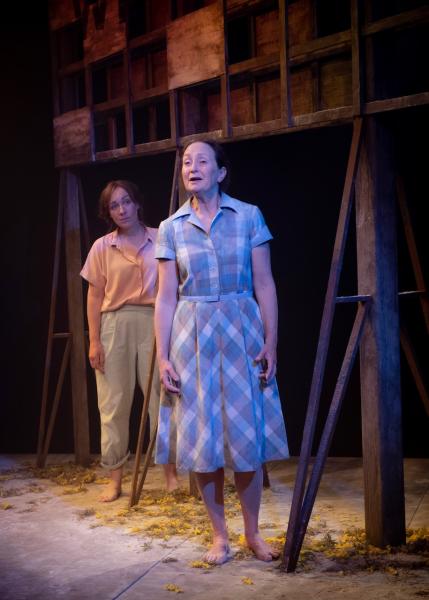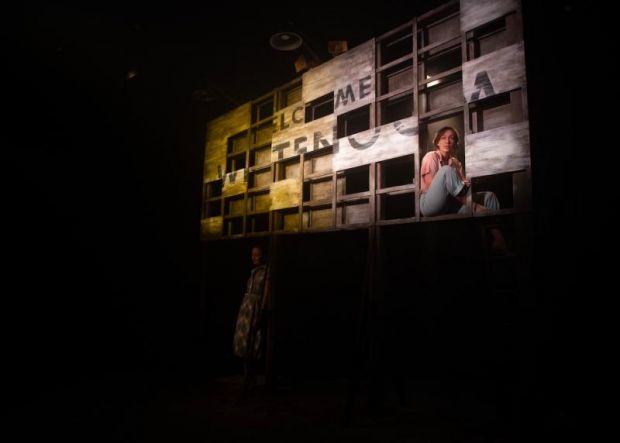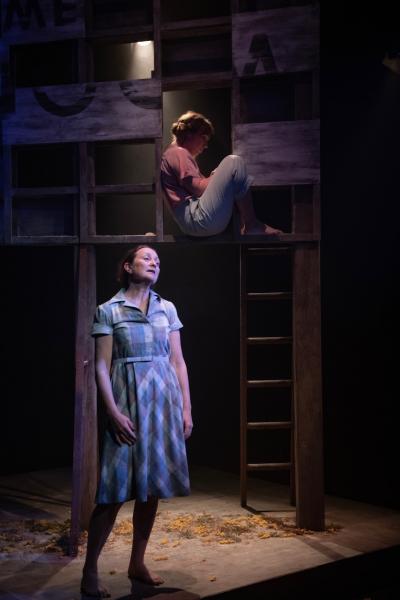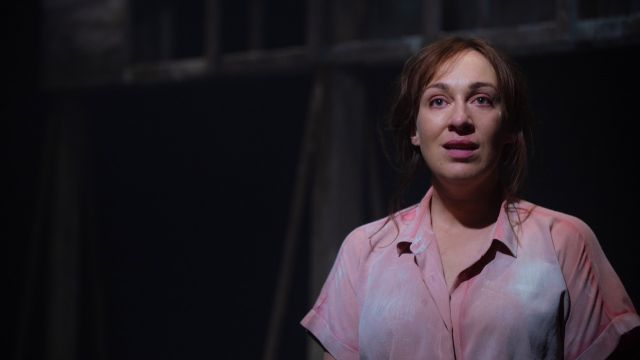Wittenoom
With Wittenoom, Mary Anne Butler has achieved something remarkable. Her play is ‘poetic drama’, a form that is extremely difficult to make work. In some hands it can be wearying, even pretentious - unless one is a poet and a dramatist: Butler is both. This is an intense, passionate play, sharp and evocative in its imagery, visceral in its emotions.
There are very few ‘scenes’ in Wittenoom. It is, if you like, a duologue. There are exchanges between a fun-loving hedonist mother, Dot (Caroline Lee), and her more careful, thoughtful daughter, Pearl (Emily Goddard), but those are moments, strands in the warp and weft of a work that weaves together joyous life and slow death – and locates both in the beautiful and deadly landscapes of Wittenoom in the Pilbara of north-east West Australia.

In her program note, Mary Anne Butler confesses that even by around 2020 (I think), she’d never heard of Wittenoom or the blue asbestos that was mined there from 1943 to 1966. Wittenoom was an asbestos mine that became a township. Post WWII migrants and hard scrabble Australians were lured there by the promise of steady work, accommodation and a kind of freedom and camaraderie in glorious isolation. But it is the tiny fibres of asbestos – a very valuable mineral - that lodge in human bodies and lead to the incurable disease of mesothelioma. The mine owners, CSR, knew the hazards, but mining went on – and on. Finally, officially, closed in 2003, Wittenoom is now, according to Wikipedia, the largest ‘contaminated site’ in the southern hemisphere.
In excellent performances, Caroline Lee and Emily Goddard make a striking contrast. Lee presents a kind of glittering, heedless, take-no-prisoners persona – that makes her fate all the more moving. Goddard is simply inherently loveable, lively, a little shy, and embarrassed by Mum, but we see her lose her touching naiveté and grow up from child to strong and angry woman. These are not naturalistic performances, but these two actors make us care for Dot and Pearl.

In bringing her rich, dense text to life, Butler has been more than helped by Susie Dee, first as dramaturg and then as director. And one of Dee’s qualities (among many), as a director is to physicalise words and emotions. You might be hard put to explain why a twist of a body, a scoot up a ladder, or a sad, poignant dance of mother and daughter adds another layer to the spoken words, but they do.
The contributions of the other ‘creatives’ are perfectly, cohesively integrated. Rachel Burke’s lighting can change the mood and suggest the harsh light of the Pilbara with its fleeting clouds. Ian Moorhead’s sound design is subtle and disturbing. As for Dann Barber’s set, it is inspired: a crumbling, derelict structure to represent a derelict town, hollowed out bodies and dying hopes.

The attempt at ‘contemporary relevance’ by reference to the Rio Tinto destruction of Juukan Gorge does feel tacked on. Yes, the traditional owners of ‘Wittenoom’ – the whitefella name for the place - the Banjima people, were totally ignored. But the play’s time frame is so firmly established that when a character from the past tells us ‘We went back’ (breaking the play’s own rules), to say, in effect, ‘today’s mining companies are still at it’, it veers close to the agit-prop the play has avoided and throws us out of the story. But that’s a momentary glitch: the actors’ commitment to their roles and Butler’s play carry all before it.
Michael Brindley
Photographer: Jodie Hutchinson.
Subscribe to our E-Newsletter, buy our latest print edition or find a Performing Arts book at Book Nook.

